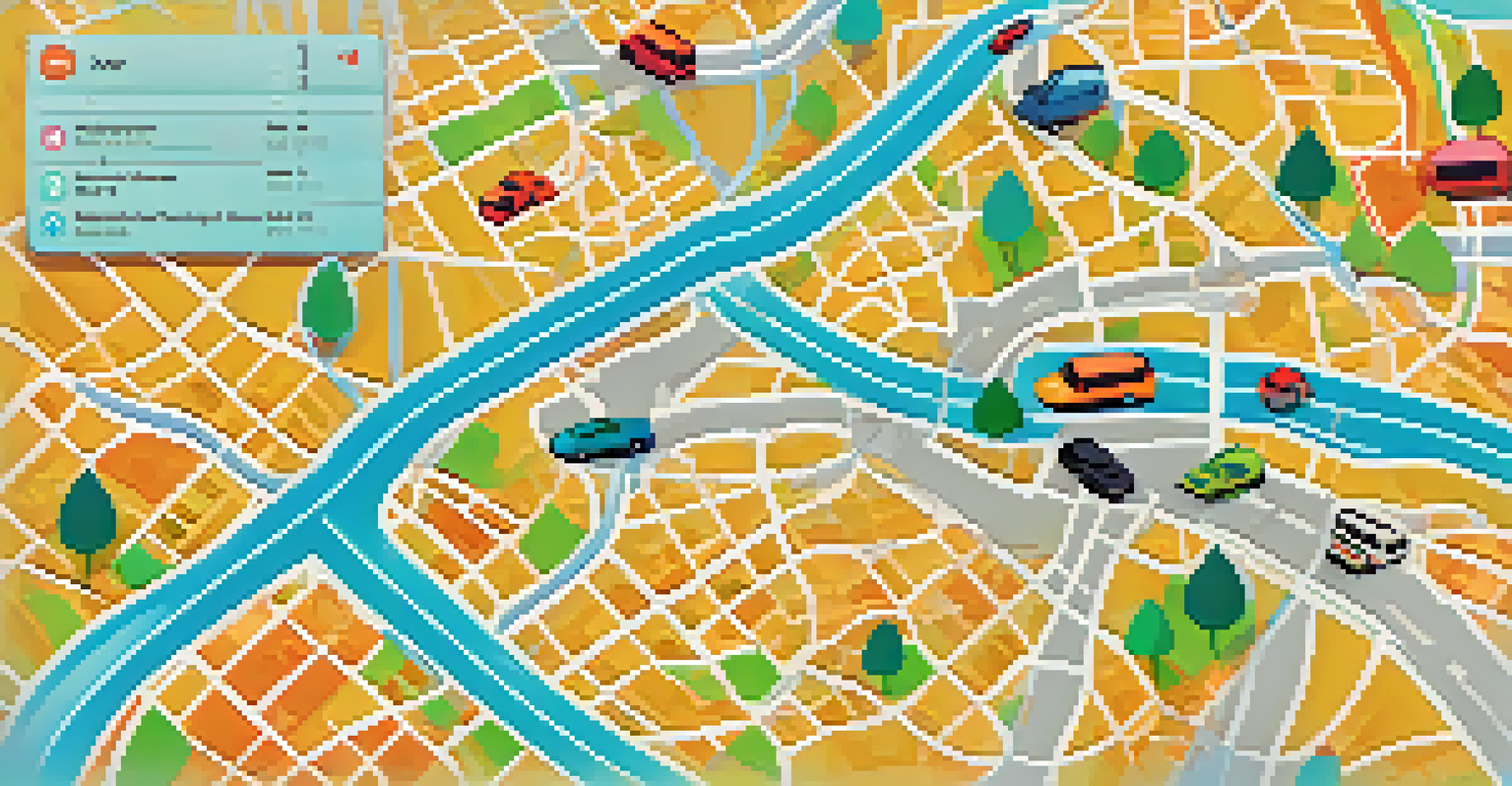Carpooling and Ridesharing: Sustainable Choices in Austin

Understanding Carpooling and Ridesharing in Austin
Carpooling and ridesharing are gaining popularity in Austin as more residents seek sustainable transportation options. Carpooling involves sharing a ride with others who are traveling in the same direction, typically in a private vehicle. Ridesharing, on the other hand, often uses a mobile app to connect passengers with drivers for a fee, making it a flexible option for many.
Carpooling is not just a ride-sharing option; it's a step towards a more sustainable future for our cities.
Both methods help reduce the number of cars on the road, which can significantly lower traffic congestion and air pollution. In a bustling city like Austin, where traffic can be a daily headache, these alternatives offer a breath of fresh air, both literally and figuratively. Understanding these concepts is the first step toward making eco-friendly travel choices.
As residents become more aware of their transportation options, the shift toward shared rides reflects a growing commitment to sustainability. This mindset not only supports local communities but also contributes to a cleaner environment. Embracing these choices is crucial for Austin's future.
The Environmental Benefits of Carpooling
One of the standout benefits of carpooling is its positive impact on the environment. By sharing rides, fewer vehicles are needed on the roads, which leads to reduced greenhouse gas emissions. This is particularly important in a city like Austin, where the love for the outdoors is strong, and clean air is essential for enjoying nature.

According to studies, carpooling can cut down carbon emissions by up to 50%, depending on the number of passengers. Imagine the collective impact if hundreds or thousands of Austinites chose to carpool regularly! Each shared ride creates a ripple effect, encouraging others to consider more sustainable travel options.
Carpooling Reduces Emissions
Sharing rides helps cut greenhouse gas emissions and promotes a cleaner environment in Austin.
Moreover, carpooling can help conserve energy resources. With fewer cars on the road, there’s less fuel consumption, which translates to decreased dependence on fossil fuels. This shift is not just beneficial for the environment; it also promotes a culture of sustainability within the community.
The Economic Advantages of Ridesharing
Ridesharing services provide economic benefits that can’t be overlooked. For drivers, it offers a way to earn extra income by utilizing their vehicles during downtime. For passengers, ridesharing often proves to be a cost-effective alternative to owning a car or using traditional taxi services.
The best way to predict the future is to create it.
In Austin, ridesharing apps like Uber and Lyft have become household names, allowing users to travel without the hassle of parking or maintaining a vehicle. This flexibility can lead to significant savings over time, especially for those living in urban areas. With the rising costs of car ownership, ridesharing presents a viable solution.
Additionally, ridesharing can stimulate local economies by increasing accessibility to various neighborhoods. More people can reach local businesses and events without the limitations of public transport, creating a win-win situation for both riders and local entrepreneurs. This interconnectedness is essential for the growth of Austin's vibrant culture.
How to Get Started with Carpooling
Getting started with carpooling in Austin is easier than you might think. Many apps and platforms are available to help connect drivers and passengers looking to share rides. Websites like CarpoolWorld or local Facebook groups can be great starting points for finding fellow commuters heading in the same direction.
When you decide to carpool, establishing clear communication is key. Discussing pick-up times, locations, and expectations can help ensure a smooth experience for everyone involved. It’s all about creating a shared understanding, which makes the ride enjoyable.
Ridesharing Boosts Local Economy
Ridesharing services enhance accessibility to local businesses, fostering economic growth in diverse neighborhoods.
Finally, don’t forget to consider the benefits of planning regular carpooling arrangements. Whether it's a daily commute or occasional trips, having a set schedule can enhance reliability and foster deeper connections with your carpool mates. Plus, you’ll likely find that sharing the journey makes the trip more enjoyable.
Tips for Safe and Comfortable Ridesharing
Safety is paramount when it comes to ridesharing, both for drivers and passengers. Always verify the driver’s information through the app before getting in the car, and don’t hesitate to ask questions if something feels off. Trust your instincts—if something doesn’t feel right, it’s okay to cancel the ride.
For a comfortable experience, consider bringing small items like water bottles or snacks if you're planning a longer journey. Creating a pleasant atmosphere can help ease any tension and make the trip more enjoyable for everyone. Remember, ridesharing is not just about getting from point A to B; it’s about the journey.
Moreover, mutual respect goes a long way in ridesharing. Being courteous, such as keeping the volume down or respecting personal space, can enhance the experience for both parties. By fostering a respectful environment, you're not just sharing a ride; you're contributing to a positive community vibe.
Local Initiatives Supporting Sustainable Transport
Austin is actively promoting sustainable transport through various initiatives and programs. The city supports carpooling by creating dedicated lanes and offering incentives for carpoolers, such as reduced tolls. These efforts not only encourage residents to share rides but also highlight the city's commitment to reducing traffic and pollution.
Additionally, programs like Capital Metro's Vanpool service provide organized group commuting options for longer distances, making it easier for residents to connect. This service allows groups of people to share a van, further enhancing the convenience of carpooling. Local government involvement plays a crucial role in fostering a culture of shared transportation.
Austin Supports Sustainable Transport
The city encourages carpooling and ridesharing through dedicated lanes, incentives, and community programs.
Community events focused on sustainability also help raise awareness about the benefits of carpooling and ridesharing. These initiatives encourage residents to consider their transportation choices, ultimately leading to a greener Austin. A collective approach to sustainable travel is essential for the city’s ongoing development.
The Future of Carpooling and Ridesharing in Austin
As Austin continues to grow, the future of carpooling and ridesharing looks promising. With advancements in technology, we can expect even more innovative solutions to emerge, making shared transport more accessible and efficient. Features like smart algorithms for matching riders and drivers can enhance user experience and convenience.
Moreover, as the city invests in infrastructure for electric vehicles and alternative transport options, carpooling and ridesharing will likely adapt to these changes. This evolution can lead to even greater reductions in emissions and traffic. The goal is to create a seamless integration of various transport methods to meet the needs of residents.

Ultimately, the success of carpooling and ridesharing in Austin hinges on community participation and awareness. As more residents embrace these sustainable options, the city can foster a culture of collaboration and environmental responsibility. Together, we can make Austin a model for sustainable urban living.